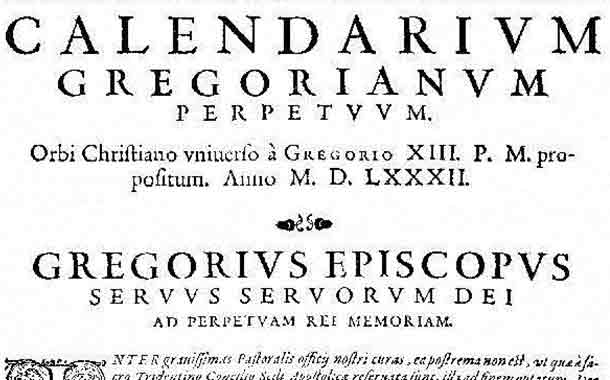<![CDATA[On the 15th October 1582 time changed. The people of several European countries went to bed and woke up ten days later. The reason was that some of the continent's major Catholic countries, including Italy, Portugal, Poland and Spain, switched from the Julian calendar to the Gregorian. The Julian calendar had been the official calendar of Europe since its invention by Julius Caesar in 45 BC. Caesar's calendar was still remarkably accurate. It consisted of eleven months containing thirty or thirty one days and February, which was made up of twenty eight days, or twenty nine in leap years. This calendar only differed from the real solar calendar by eleven and a half minutes a year. The tiny inaccuracy might seem irrelevant, but by the start of the sixteenth century Europe had fallen behind the solar calendar by ten days. This increasing gap between the solar calendar and the Julian had to be solved for practical reasons. Harvests and the religious festivals associated with them were all performed on a seasonal basis. Indeed, Europe, still a primarily agricultural society at this point, based its entire existence around the passing of the seasons. If the calendar separation had continued, the dates for harvests and festivals would have had to be revised or they would have started to fall later in the seasonal cycle. In 1582 Pope Gregory XIII ordered the advancement of the calendar by ten days, to correct the discrepancy with the solar calendar. On top of this, robust new systems were put in place to reduce the calendar's inaccuracies. The main changes were in the rules for determining leap years. Rather than a leap year simply being any year evenly divisible by four, years that were also divisible by a hundred would no longer be leap years, unless they could also be divided by four hundred. This meant that century years such as 1700 and 1800 were not leap years, but 1600 and the year 2000 were. The Gregorian calendar might seem slightly confusing, but the formula is undeniably effective. A year on the Gregorian calendar only differs from a solar year by twenty six seconds. This means it takes 3,323 years for a day's difference to appear between the calendars. Although the calendar is named after Gregory XIII, he was simply the man with the authority to widely implement it, rather than its inventor. Its creator was Luigi Lilio, an Italian doctor, astronomer and philosopher who died in 1576, six years before his calendar was implemented. Highlighting the power of the religious division through Europe at the time, Gregory's papal bill was ignored in many Protestant countries, despite the effectiveness of the new system. Germany and the Netherlands changed to the new system in 1698, symbolising the slow acceptance of the improved method of time keeping. The new calendar only reached Great Britain in 1752, after the passing of the British Calendar Act. By this point the official British calendar differed from most of mainland Western Europe by eleven days. On Wednesday the 2nd September British citizens went to sleep and woke up on Thursday the 14th. Other countries made the switch even later. Russia did not switch from the Julian calendar until after the Communist revolution in 1918. The last European country to switch was Turkey in 1927. It was adopted by the Nationalist government in China in 1929. In some Orthodox countries however, the Julian calendar is still in use.]]>
The Start of Gregorian Time
